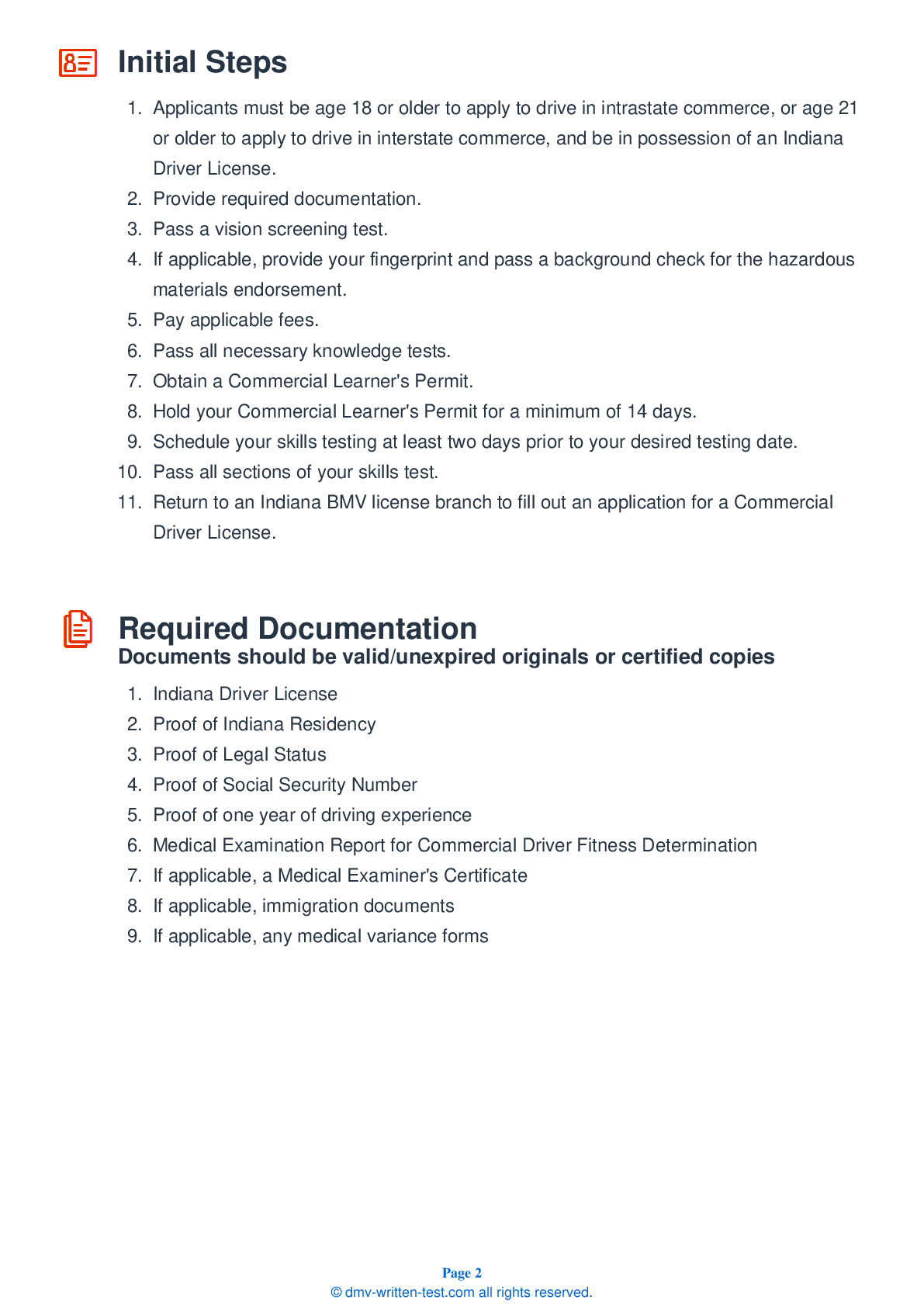Air Brakes
This endorsement is required for driving a vehicle with air brakes. To receive this endorsement, applicants must pass a written test. The test consists of 25 multiple choice questions. Each question has four answer choices. To pass, the applicant must answer at least 20 questions correctly. Test questions come from the Indiana Commercial Driver License Manual. Questions come from the chapter covering: Air Brakes. The Air Brakes endorsement may be used with the Class A, B or C CDL.
Number of Question
Passing Score
7. Air tank drains:
Explanation
Compressed air in an air brake system usually contains a certain amount of water and compressor oil. The water and oil can damage the brakes if left to accumulate in the system. Manually operated air tank drains must be opened daily to remove this build-up.
8. Brake fading is caused when:
Explanation
Using the brakes excessively will cause them to overheat, making them less effective. This is referred to as "fading."
9. A tank endorsement is:
Explanation
Subject to certain conditions, a tank endorsement is required to operate a tank vehicle that is used to haul either liquids or gases.
10. On a truck with air brakes, the braking system’s air compressor:
Explanation
In an air brake system, the air compressor pumps air into the air storage tanks. The air compressor is controlled by the air compressor governor.
11. An air brake-equipped vehicle traveling at a speed of 55 mph under ideal driving conditions will need approximately ____ to come to a complete stop.
Explanation
A vehicle's total stopping distance is made up of perception distance, reaction distance, brake lag distance, and braking distance. With all of these factors included, an air brake-equipped vehicle traveling at a speed of 55 mph under ideal driving conditions will need approximately 450 feet to come to a complete stop.
12. To ensure normal stopping power, drivers of vehicles equipped with a front brake limiting valve should:
Explanation




